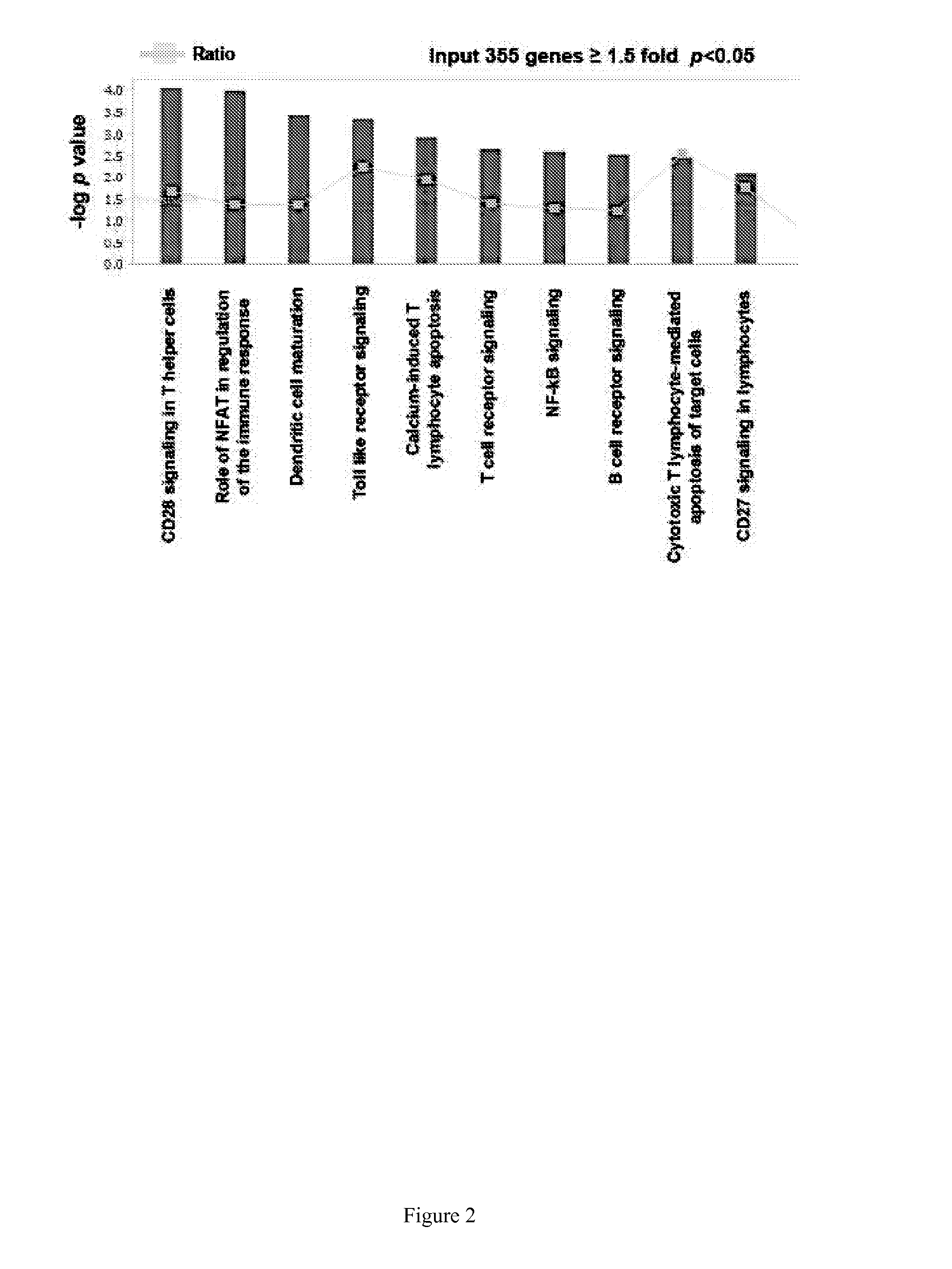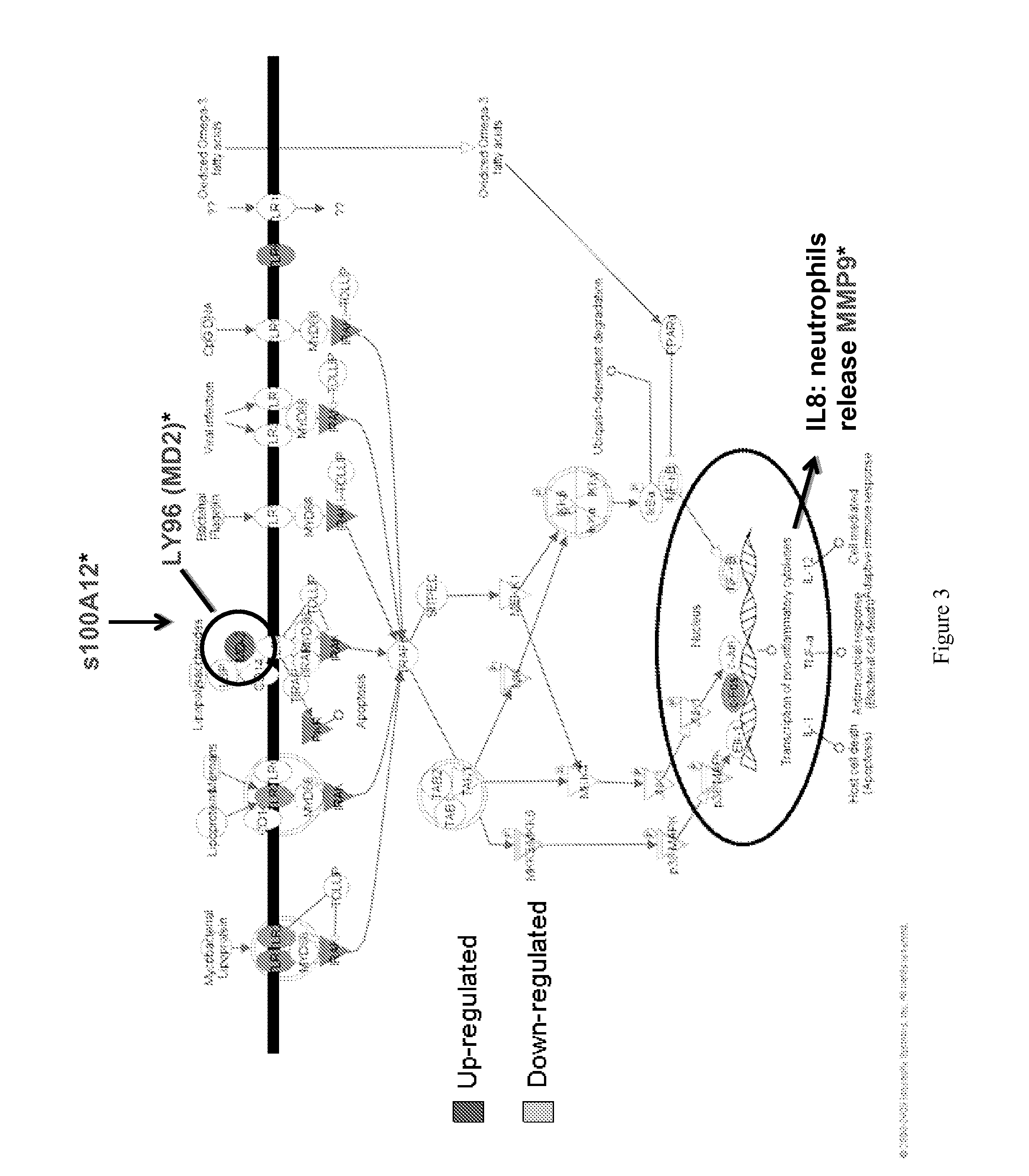Biomarkers for acute ischemic stroke
a technology biomarkers, which is applied in the field of identification and use of diagnostic markers for acute ischemic stroke, can solve the problems of limited experience and/or proper training of medical clinicians, affecting stroke victims, and suffering from a number of limitations, so as to facilitate the treatment of stroke patients and achieve additional diagnostic and/or prognostic indicators
- Summary
- Abstract
- Description
- Claims
- Application Information
AI Technical Summary
Benefits of technology
Problems solved by technology
Method used
Image
Examples
example 1
Identification of Blood Biomarkers for Acute Ischemic Stroke
[0227]Overview.
[0228]The objective of this study was to identify peripheral blood biomarkers for the differential diagnosis of acute ischemic cerebrovascular syndrome (AICS) through gene expression profiling. Peripheral whole blood samples were collected from n=39 patients who were 18 years of age with MRI diagnosed AICS and n=25 control subjects who were Non-stroke neurologically healthy. Total RNA was extracted from whole blood stabilized in Paxgene RNA tubes, amplified, and hybridized to Illumina humanRef-8v2 bead chips. Gene expression was compared in a univariate manner between stroke patients and control subjects using t-test in GeneSpring. The significant genes were tested in a logistic regression model controlling for age, hypertension and dyslipidemia. Inflation of type one error was corrected by Bonferroni and False Discovery Rate. Validation was performed by QRT-PCR using Taqman gene expression assays. A nine gen...
example 2
Gene Expression Profile for the Diagnosis of Ischemic Stroke
Specific Aims Introduction.
[0289]Stroke is the third leading cause of death in the United States (60) and accounts for 10% of deaths worldwide (61). Clinical diagnosis of ischemic stroke is often difficult, complicated by its multiple etiologies and variable clinical presentation. Most hospitals in the United States use CT to initially evaluate patients suspected of having an acute stroke; however CT is less than optimal for identifying acute ischemia (62). The only Food and Drug Administration (FDA) approved treatment for ischemic stroke is recombinant tissue plasminogen activator (rtPA), and rtPA is only approved for use when patients present to the hospital within three hours after onset of symptoms. The downside is that the median time from stroke symptom onset to presentation to the emergency department is 3-6 hours (63). (It is noted that this Example 2 includes a separate listing of references to which the text makes...
example 3
Validation of 9-Gene Biomarker Panel by Further Bioinformatic and Biostatistical Analysis Using INGENUITY® Systems, Inc.'s IPA® Software Package
[0364]The data of Example 1 was further analyzed using INGENUITY® Systems, Inc.'s IPA® software package to determine the most relevant biological pathways likely to involve the group of biomarkers of the invention, namely, chemokine receptor 7 (CCR7); chondroitin sulfate proteoglycan 2 (CSPG2); IQ motif-containing GTPase activation protein 1 (IQGAP1); orosomucoid 1 (ORM1); arginase 1 (ARG1); lymphocyte antigen 96 (LY96); matrix metalloproteinase 9 (MMP9); carbonic anhydrase 4 (CA4); and s100 calcium binding protein A12 (s100A12), wherein at least one of the biomarkers is chemokine receptor 7 (CCR7); chondroitin sulfate proteoglycan 2 (CSPG2); IQ motif-containing GTPase activation protein 1 (IQGAP1); or orosomucoid 1 (ORM1).
Result A. Analysis of stroke versus control data validated the 9 gene panel of the invention. INGENUITY® pathway analysi...
PUM
| Property | Measurement | Unit |
|---|---|---|
| Time | aaaaa | aaaaa |
| Time | aaaaa | aaaaa |
| Volume | aaaaa | aaaaa |
Abstract
Description
Claims
Application Information
 Login to View More
Login to View More - R&D
- Intellectual Property
- Life Sciences
- Materials
- Tech Scout
- Unparalleled Data Quality
- Higher Quality Content
- 60% Fewer Hallucinations
Browse by: Latest US Patents, China's latest patents, Technical Efficacy Thesaurus, Application Domain, Technology Topic, Popular Technical Reports.
© 2025 PatSnap. All rights reserved.Legal|Privacy policy|Modern Slavery Act Transparency Statement|Sitemap|About US| Contact US: help@patsnap.com



